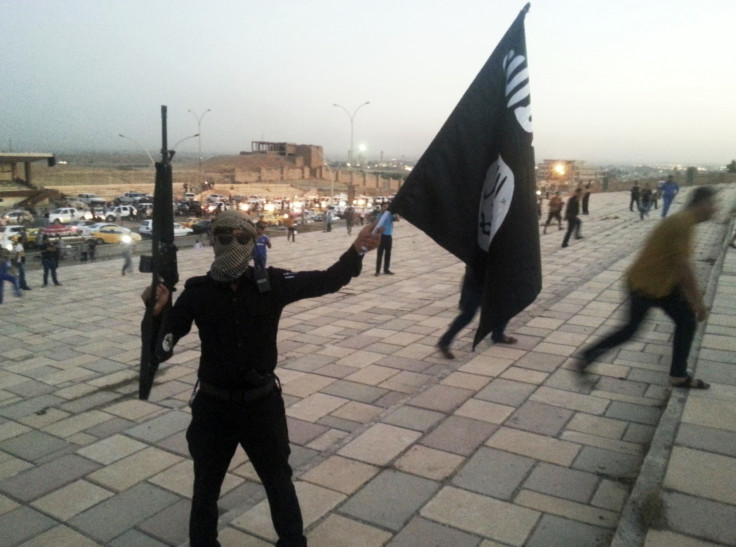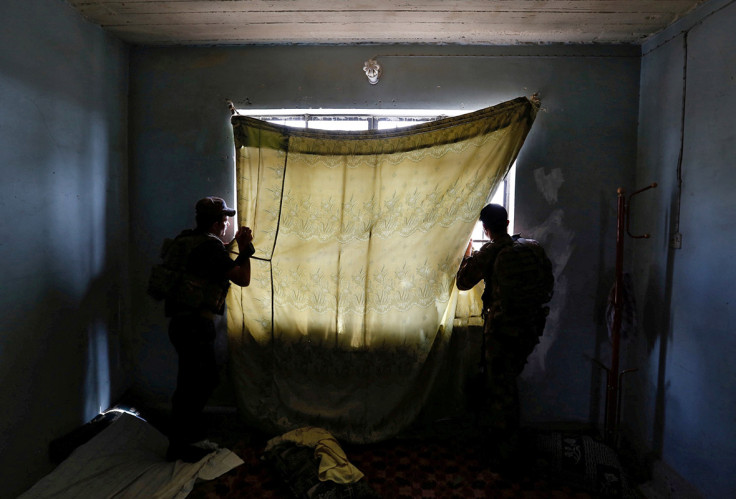Seven Isis torture methods revealed include the 'flying carpet' and the 'German chair'
Isis torture techniques have been detailed by victims that survived them.
Unimaginable body contortions, burning alive and breast-biting metal jaws – these are just some of the horrific torture methods preferred by Isis, a new report has revealed.
The seven most popular torture techniques employed by Isis operatives in Syria and Iraq have been described in agonising detail by men and women that endured them, in conversations with researchers from the International Centre for the Study of Violent Extremism (via Newsweek).
The names given to the methods, which include The Ghost, The German Chair and The Flying Carpet, belie the horrors awaiting prisoners inside the so-called caliphate.
The report notes that Isis have special torture chambers and often use a mix of physical and mental punishment. The International Centre for the Study of Violent Extremism spoke with 72 victims and sources.
The Fuel is thought to be the least common of the seven major torture methods. It sees operatives pour crude oil on handcuffed victims and demand that they confess their crimes or be set on fire.
A 33-year-old man who who survived this gruesome form of torture said: "They put a gun to my head and forced me to strip naked and then they cuffed me to the concrete seat.
"The interrogator was Tunisian. He shouted, 'Confess that you are infidel.' I did not say a thing... I thought if I say anything they would kill me.
"He brought a gallon jug and poured oil on me; from the chest down. He said confess or I will burn you. I thought he was trying to scare me. I did not know that he would do it. Next thing I remember was waking up in a hospital. I thank Allah for being fortunate to have two children. I had them before."
The Flying Carpet is made of two hinged metal or wooden boards that can be folded. The victim's legs and arms are tied with their back against the boards, making them unable to move. Isis operatives then bend victims in a variety of L-shape positions.
They also bend the two boards inwards causing serious, often permanent, injuries to the spine. Victims are also beaten and given electric shocks while restrained.
A 37-year-old man who survived the flying carpet said: "My head was so close to my feet. They almost broke my back. It still hurts. I cannot get up quickly; I need to get myself seated slowly.
"When they put me on it, they beat me with a cable. Then, they started electrocuting me. They put water first. I do not know how many times they did it before I passed out. I do not know how long they kept me on it. When I woke up I was still on the Bisat [Flying Carpet]."

The Biter is mainly dished out to female detainees accused of breaching sharia law. It is a set of iron jaws that look like large tongs which leave savage 'bites' on the human body. Captors often apply the metal jaws to victims' breasts causing severe pain and disfigurement.
A 63-year old woman who was tormented with the biter told researchers she was tortured with it because she was not wearing a niqab.
"[A female captor] asked me whether I heard of the biter. I just cried. When she bit me with it I screamed so that maybe all the people in Raqqa heard me. [Isis] tortured us, killed us, made us immigrants; may Allah avenge for what they did to us," she said.
The Ghost is one of the most commonly used methods of torture by Isis. Victims are handcuffed behind their backs and then hung by the handcuffs from handles or hooks with their feet off the ground.
They are often left in this position for days while being beaten. This method causes severe pressure on victim's shoulder sockets, dislocating the victim's joints which may result in in permanent disability.
A former detainee, 26, said: "It was so painful it felt that my ribs shattered. I screamed. I was shot once. It was more painful... One of them started getting the electric prod closer to me and said that he will neuter me. It was so painful that I lost consciousness right away."
Lashing is Isis' main torture method and probably the group's most notorious as it is often used in public displays. Captors typically use canes, hoses and industrial cables to beat victims. Lashing is often used in combination with other methods of torture.
A 33-year-old man captured in Syria, said: "They raised my arms and cuffed each of my arms to the dangling chains. I pleaded to them. I swore to them that I was not affiliated with the Free Syrian Army. They did not listen. One of them started lashing me with something; maybe a cable. I counted seventeen."

The German Chair is a metal seat where the back can be shifted so that victims' bodies are stretched when fastened to it. This method often leaves survivors with permanent injuries. Again, they are often lashed while fastened to it.
A 27-year-old victim said: "The man behind me pulled the chair, my legs were on the ground and torso up. My body was almost in a 90 degree angle. It was very painful. I thought I would die on it. I thought there was nothing more painful."
The Tire method sees the victim's head and legs forced through holes in the rim of a large tire, immobilizing them. Torturers then beat and electrocute their victim.
A 47-year old man, recounted his suffering, saying: "I was holding the sides of the tire with my hands while my head and legs were on the other side of the tire. I heard a Tunisian shouting my turn; it is time for Lakhdar Brahimi. He started to beat my legs and then he hit me on the soles of my feet."
© Copyright IBTimes 2025. All rights reserved.





















